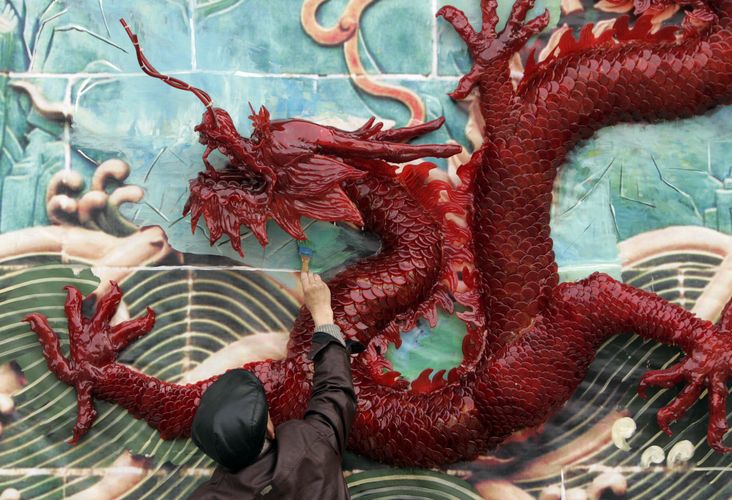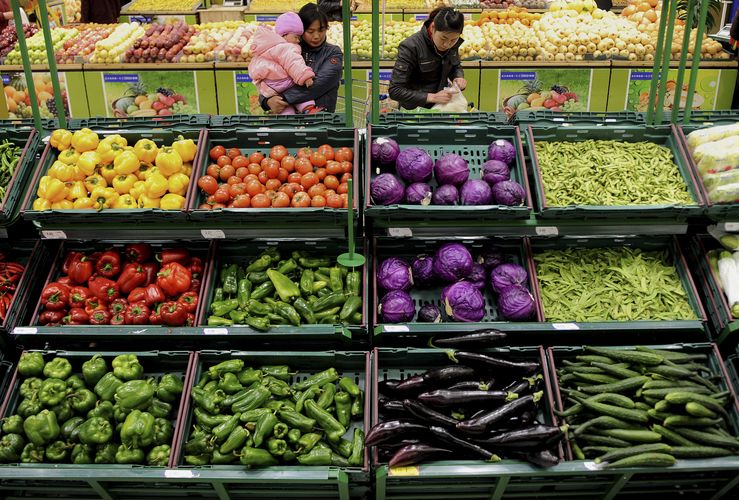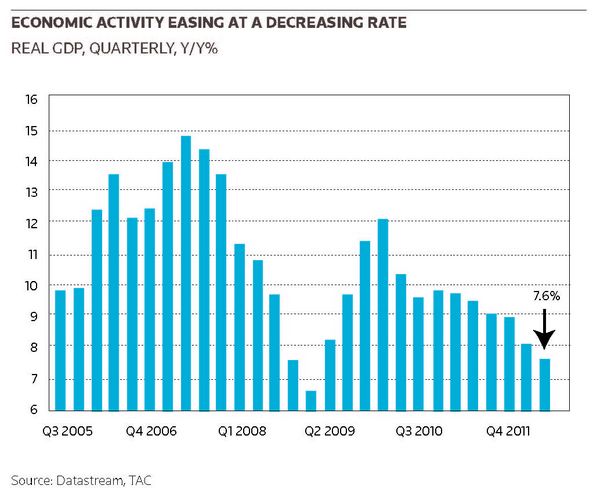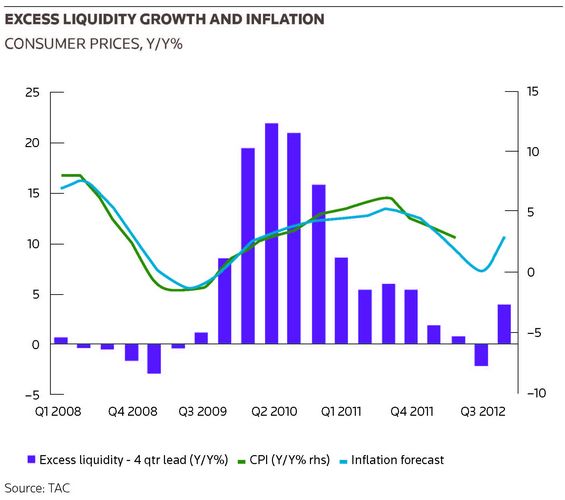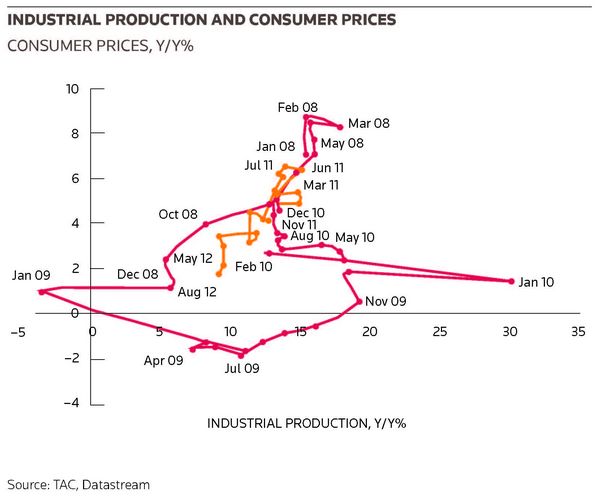As the global economic and financial environment has deteriorated since the end of last year a visible hard landing of China’s economy would undoubtedly reinforce negative views on global growth.
To view the Digital edition, please click here.
China’s economic indicators and performances so far in the first half of 2012 have fuelled both a visible downward revision of the consensus’ outlook and renewed worries about a potential hard landing, with its social, political and international consequences.
With the usual caveat regarding eurozone uncertainties, TAC’s benchmark scenario of a “substantial soft landing” with 2012 GDP growth at 7.5%–8% and modest acceleration in the first half of 2013 remains on track. This would be associated with a progressive easing in economic policies, continuing the trend observed since the latter part of 2011.
Data released during the first half of 2012 have confirmed a notable slowdown. Real GDP growth registered a three-year low of 7.6% year-on-year in the second quarter of 2012, following a stronger 8.9% y/y performance in the first quarter of 2012. In parallel, industrial production continues to post lacklustre gains, with the pace easing from about 13% y/y in the fourth quarter of 2011 to below 10% y/y in the second quarter of 2012.
Meanwhile, inflation decelerated by more than 150bp to 2.9% y/y. Overall, the traditional chart combining cyclical observations on industrial production and inflation shows an intensification of the economic slowdown, however, it also highlights a much less worrying dynamic than that observed during the fourth quarter of 2008 and the first quarter of 2009.
A key point in the diagnosis for a Chinese hard landing relates to the social and employment implications of the slowdown in production. Here, observers have missed a major break in China’s overall transmission from aggregate economic growth to job creation, namely the fact that the economy has become more labour intensive over the past few years as a result of less stringent restructuring of state-owned enterprises.
Indeed, as TAC research on FDI and employment in China showed, the large lay-offs in SOEs were almost completed by 2005. The mere fact that SOEs stopped laying off workers in 2005–10, coupled with persistent labour expansion in non-SOEs, has substantially reduced the differences between economic growth and employment growth.
Ceteris Paribus, this would suggests that the “socially sensitive threshold” for economic growth, ie. the level at which one would call China’s growth performance a “hard landing”, has declined by 1% to 2% from the oft quoted 8% rate.
Journey’s end is nigh
The slowdown observed since the second quarter of 2011 should progressively stabilise towards the fourth quarter of 2012 and the first quarter of 2013. Despite a weak second-quarter 2012, the rate of deceleration is gradually subsiding, stemming from sustained wage increases associated with rising purchasing power, and initial signs of reacceleration in money and credit distribution are becoming increasingly apparent.
Moreover, these positive indications are also being supported by China’s ability to transfer most of the external slowdown to its trading partners. Exports from China will unlikely play a leading role over the near-term growth cycle, as imports and exports tend to move together. Consequently, the net contribution of external trade to overall GDP growth will remain muted.
In parallel, favourable dynamics persist for household purchasing power. Growth in hourly wages has stabilised near 20% y/y since mid-2011. Yearly figures published by the National Bureau of Statistics show an upward march in wages since 2011, with average urban wages paid by the private sector accelerating from 14% in 2010 to 18% in 2011.
Meanwhile, the expansion in CPI has declined substantially from the mid-2011 peak to 1.8% y/y in July 2012 while producer prices have displayed a sharper drop. This suggests downward pressure on CPI is likely to remain strong in the near term. In parallel, TAC’s simple quantitative model based on the strong relationship between excess money supply and headline CPI, with an average lag of four quarters, highlights that inflation should decline further during the summer of 2012 before picking up slightly towards fourth-quarter 2012 and early 2013.
A broader forward-looking assessment can be derived from a component of TAC’s country risk model, the cyclical balance. It combines a monetary pressure index (de facto stance of monetary policy) and a real economic pressure index (leading indicator for aggregate domestic demand) to qualify the risks implied by the current cyclical position.
Using this leading indicator, which typically has a three to six-quarter lead on actual cyclical developments, TAC observes that the monetary pressure index for China moved back below the main threshold for neutral money supply, opening the way for monetary relaxation. This is supported by three cuts in the reserve ratio since the third-quarter of 2011 and the latest cuts in borrowing costs in June and July 2012.
The real economic pressure index continued to decline, albeit at a much more modest pace than before, indicating both a visible softness for the current period and the proximity of a cyclical trough. PMI indices, both from HSBC/Markit and the NBS also suggest a rough stabilisation in economic growth. None of these indicators point towards stronger recessionary forces and the imminence of a hard landing pushing China’s GDP far below current levels. Barring a catastrophic international scenario, the third and fourth quarter of 2012 may well turn out quite weak, but this would likely mark the trough of the current mid-cycle.
Domestic orientation of banking
The stimulus policies put in place in 2009 laid a large burden on domestic banks as money injection through bank lending was used as a substitute for direct fiscal spending. This translated into a surge in bank lending activity in 2009 and 2010, wherein new loans disbursements climbed to Rmb9,630bn and Rmb7,950bn, respectively.
Although outstanding loans stand at Rmb60.2trn as of the end of July 2012, the pace of new loan disbursements has since eased while the decline in real estate prices appears to have found a floor with prices now charting a northward trajectory and the Shanghai Stock Exchange Property Index, a performance measure of the property sector, on a renewed climb since late August 2012.
Based on TAC’s country risk monitoring tool RiskMonitor, the single most important factor for China’s overall country risk is the high level of domestic credit in the economy. When the level of domestic credit is compared with other developing countries the Red Dragon stands apart. However, it is not in the critical “systemic risk” quadrant as funding is almost entirely domestic in nature, implying relatively stronger capabilities in reacting to banking problems.
Moreover, the central government stimulus package was completed by additional spending through local government, mostly dedicated to finance infrastructure programmes and large housing or real estate developments. The spending was made by raising loans from state-owned banks through financial platforms, so-called local government investment companies (LICs), which were used to circumvent regulations that previously forbid local governments to borrow directly on markets or to banks. China hosts nearly 10,000 LICs and due to mismatches between expenditures and spending rules are highly indebted.
Nonetheless, risks in the banking sector are still manageable, with a worst-case scenario likely to trigger substantial government intervention. Given that most of the loans extended to LICs are from state-owned banks (SOBs), which control more than two-thirds of total banking assets in China, any credit problem would then boil down to a discussion between the Treasury, Ministry of Finance, SOBs and local governments.
Hence, it is highly unlikely that the central authorities would risk a systemic shock to the financial system. Furthermore, the central authorities keep a tight control on many financial levers (eg. SOBs, interest rates, etc.) and boast a strong fiscal position, with a fiscal deficit at 1.2% of GDP in 2011, indicating that there remains significant room to manoeuvre in terms of public debt.
